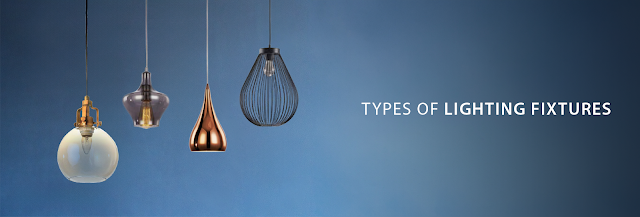Lighting emerges as a silent maestro in the delicate tapestry of hotel architecture, creating mood and shaping visitor experiences. Hotel lighting designers work closely with architects and interior designers to create lighting schemes that align with the hotel's overall design concept and meet the functional needs of the space. The goal is to strike a balance between practicality and aesthetics, ensuring that guests have well-lit and functional spaces and enjoy a visually pleasing and memorable environment during their stay. This blog checks into the significant impact of hotel lighting, uncovering concepts that illuminate and inspire wonder.
WHY IS LIGHTING IMPORTANT IN HOTELS?
First impressions are crucial in the hospitality industry. Hotel lighting is more than just a useful design feature; it sets the tone for a guest's stay. Lighting that is properly done improves visual appeal, produces a friendly ambience, and contributes to a memorable guest experience.
GOALS OF HOTEL’S LIGHTING DESIGN
Before diving into specific lighting ideas, it's crucial to outline the goals of hotel lighting design. These goals include
Creating a Welcoming Ambience: Your hotel’s lighting should convey a sense of warmth and welcome, making people feel at ease and comfortable when they enter.
Enhancing Aesthetics: Lighting should highlight the architecture, interior design, and theme features of the hotel, adding to a visually appealing setting.
Facilitating Functionality: Task lighting in rooms and practical illumination in common spaces should complement guests' functional needs, ensuring a smooth and enjoyable stay.
Fostering a Memorable Experience: The ultimate goal is to create an experience that stays in guests' thoughts, guaranteeing they associate the hotel with a positive and captivating memory.
8 HOTEL LIGHTING IDEAS WITH INSPIRING EXAMPLES
India provides a unique canvas for hotel lighting solutions with its vast architectural legacy and rich cultural lighting trends. Indian hotel lighting concepts blend luxury, spirituality, and warmth, drawing influence from traditional features and adding a contemporary touch. Here are the top 8 hotels that showcase impeccable lighting designs.
1. AMBIENT LIGHTING WITH CULTURAL FUSION
Taj Palace, Mumbai
Infuse ambient lighting with traditional features to capture the bright hues of India. Consider modern chandelier lights with elaborate designs influenced by Indian art and motifs. In its lobby, the Taj Mahal Palace in Mumbai, for example, effectively integrates ambient lighting with cultural aesthetics as part of its hotel lobby lighting.
2. TASK LIGHTING WITH CONTEMPORARY TWIST
ITC Grand Bharat, Gurgaon
Accept the classic grandeur of task lighting as part of the hotel room lighting while adding a new twist. Contemporary Indian designs or geometric patterns on bedside table lamps for bedrooms can improve practicality while also contributing to the overall theme. The ITC Grand Bharat in Gurgaon exemplifies this fusion of tradition and modernity in the hotel room’s lighting.
3. HIGHLIGHTING INDIAN ARTISTRY
The Oberoi Udaivilas, Udaipur
Accent lighting can be used to showcase Indian artwork and handicrafts that adorn hotel interiors. To highlight the exquisite details of traditional paintings or sculptures, wall lights for bedrooms or recessed lighting can be properly positioned. The Oberoi Udaivilas in Udaipur showcases how accent lighting trends can elevate the visual appeal of indigenous art.
4. FESTIVAL LIGHTING WITH MOOD AND COLOUR CHANGE
ITC Maurya, New Delhi
With mood and colour-changing lights, you can capture the atmosphere of Indian celebrations. Hotels, for example, can use dynamic lighting to create a festive environment during Diwali, with warm tones and brilliant colours reminiscent of the Festival of Lights. During Diwali, the ITC Maurya in New Delhi is famed for its festive illumination. The hotel’s outdoor lighting especially creates a joyous ambience.
5. HAVELIS-INSPIRED COURTYARD ILLUMINATION
Samode Palace, Jaipur
Many traditional Indian havelis had beautiful courtyards. Hotels can take inspiration from this by illuminating courtyards with outdoor and landscape lights, creating a tranquil and pleasant atmosphere. The courtyard illumination of Jaipur's Samode Palace vividly evokes the elegance of a bygone period.
6. TEMPLE-INSPIRED BAR LIGHTING IDEA
The Leela Palace, Chennai
Incorporate the spiritual energy of Indian temples into bar lighting design. Pendant lights or temple-inspired fixtures can provide a unique touch to the bar area. The Leela Palace in Chennai creatively integrates the temple-inspired idea of lighting the bar, creating a sacred yet contemporary ambience.
7. TRADITIONAL HOTEL ROOM LIGHTING WITH MODERN CONTROL SYSTEMS
The Rambagh Palace, Jaipur
For the best visitor experience, combine traditional room lighting with modern control technologies. Adopting energy-efficient bulbs and sophisticated lighting controls can be environmentally friendly while giving guests personalised lighting options. The Rambagh Palace in Jaipur integrates modern lighting controls in traditional rooms.
8. GRAND HOTEL LOBBY LIGHTING WITH HERITAGE INFLUENCES
The Falaknuma Palace, Hyderabad
Grand lighting fixtures inspired by India's heritage will make a statement in the hotel lobby. Lighting a grand entrance with large chandeliers or pendant lights with elaborate designs inspired by historic architecture. The Falaknuma Palace in Hyderabad showcases the grandeur of Indian heritage in its lobby lighting.
Consider the impact of lighting on the whole experience when planning your next hotel lighting design. Let lighting transform your hotel into a nest of hospitality, whether inspired by classic elegance or the bold assertions of LEDs. The tale of a hotel is revealed by the creative interplay of light and shadow, not merely by its architecture or furniture. Brighten up your hotel with Jaquar lighting! Make your guests feel special with our stylish and energy-efficient hotel lighting solutions.















Comments
Post a Comment